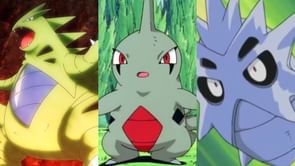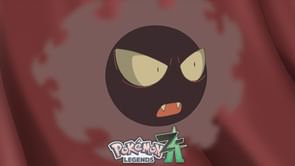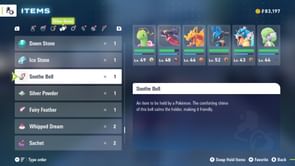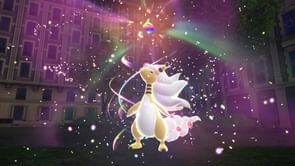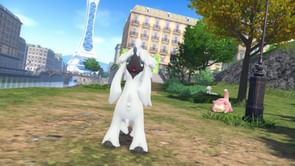Introduced in generation two, with the Pokemon Gold and Silver games, Quilava is a monotype fire Pokemon. It is the second stage of its three stage evolution line and will evolve from Cyndaquil and into Typhlosion upon reaching the respective level thresholds. Quilava is classified by the Pokedex as the “Volcano Pokemon” which may point to its fiery capabilities. This guide will showcase Quilava’s capabilities in battle, its appearances in the anime, as well as other general facts about Quilava.
About Quilava
As a generation two Pokemon, Quilava first appeared in the Original Series in the episode You’re A Star, Larvitar. It made a minor appearance in this episode as a rival Pokemon training for the Silver Conference. Quilava is the second stage evolution of the fire starter line of generation two and evolves from Cyndaquil at level 14 before evolving into Typhlosion upon reaching level 36. The Pokedex states that Quilava will keep enemies at bay with the flames on its back, like a fiery porcupine.
| First appearance in anime | Pokemon the Original Series: You’re A Star, Larvitar |
| First appearance in game | Pokemon Gold and Silver |
| Region | Johto |
| Evolution | Evolves from Cyndaquil, evolves into Typhlosion |
| 1st Evo level | 14 |
| 2nd Evo level | 36 |
| Pokedex Entry | Quilava keeps its foes at bay with the intensity of its flames and gusts of superheated air. This Pokémon applies its outstanding nimbleness to dodge attacks even while scorching the foes with flames. |
Quilava Base Stats
| HP | 58 |
| ATTACK | 64 |
| DEFENCE | 58 |
| SP. ATTACK | 80 |
| SP. DEFENCE | 65 |
| SPEED | 80 |
| TOTAL | 405 |
Appearance
Quilava is a quadrupedal Pokemon with a body similar to a weasel. The top side of its body is black and its underbelly is yellow with red spots on its head and at its base that can spew flames. Typically, Quilava will not have its flames on unless it is in battle or it is irritated. It has red eyes with black pupils and its four feet end in three digits each. Quilava is a short Pokemon at 2 feet and 11 inches, or 0.9 meters, tall.
Behavior
Throughout the anime, Quilava has appeared in numerous different roles in multiple seasons of the anime. It was even used by Ash in the Diamond and Pearl season of the anime. Quilava is not as hot-headed as other fire type Pokemon and is shown to warm up to its trainer somewhat quickly. It is a loyal Pokemon and has a strong fighting spirit while Ash’s Quilava specifically was shown to be a calm and reliable presence on his team.
Strengths and Weaknesses
As the second stage evolution of its line, Quilava still requires a little more investment in order to show its strengths. While its special attack and speed are respectable, it falls a little short offensively. However, as a starter Pokemon, the rest of its stats are fairly balanced to showcase its reliability. As a monotype fire Pokemon, Quilava is 2x weak to ground, rock, and water type moves. It is immune to no types, but is resistant against bug, steel, fire, grass, ice, and fairy type moves.
Best Moveset
Unfortunately, there is next to no reason to use Quilava in competitive battle. Even in the NFE (Not Fully Evolved) format, there is little reason to consider Quilava over other fire type Pokemon. Instead, it is better to use Typhlosion if you want a generation two fire starter. Consider running Eruption, Fire Blast, Focus Blast, and Hidden Power Grass/Hidden Power Rock. Eruption and Fire Blast both benefit from STAB (Same Type Attack Bonus), Focus Blast can help you cover problematic types of Pokemon, and Hidden Power Grass/Hidden Power Rock are interchangeable depending on which type is more threatening to your team.
| Eruption | Fire Blast |
| Focus Blast | Hidden Power Grass/Hidden Power Rock |
How to Catch Quilava in Pokemon Go
If you would like to obtain a Quilava in Pokemon Go, the easiest way to do so would be to first obtain a Cyndaquil and eventually evolve it into Quilava. That is because like most evolved Pokemon, the base evolution is a more common spawn to encounter. You can find Cyndaquil spawning in the wild at a boosted rate near residential areas, neighborhoods, dry/arid climates, and in clear weather. Cyndaquil can also be hatched from 2 and 5 km eggs, and you will need 25 candies to evolve Cyndaquil into Quilava and another 100 to evolve it into Typhlosion. If you would like to skip collecting candies, every Pokemon in this evolution line has appeared as a raid boss in the past. Cyndaquil has been a tier one raid boss, Quilava has been a tier two raid boss, and Typhlosion has been a tier four raid boss.
Trivia
- Quilava and Typhlosion share their classification with Entei, a legendary fire type Pokemon.
- The inspiration for Quilava’s design is likely based on stoats or porcupines.
- The name Quilava is a combination of the words quill and lava.
Explainer Video
FAQ
What animal is Quilava based on?
Quilava seems to be based on a stoat or a porcupine. Its body is shaped more closely to a stoat, but its name and fiery back are closer to a porcupine’s quills and method of defense. Quilava’s body shape also resembles a weasel, but there is no official statement by the designers on what Quilava’s inspiration was.
Is Quilava a good Pokemon?
While there is nothing explicitly wrong with Quilava, there are not many strengths regarding Quilava either. It has no unique ability to give it a niche role, its stats are average in all regards, and its role can often be filled with a more offensive/defensive Pokemon. Quilava does not excel at anything in particular, but it is not necessarily a weak Pokemon.
Does Ash’s Quilava evolve?
Ash’s Cyndaquil evolves into Quilava during the Diamond and Pearl season of the anime. However, it never reaches the final form before being released by Ash. While Ash will visit Quilava at Professor Oak’s laboratory on occasion, it has remained at its second stage of evolution.
Conclusion
Congratulations, you now know just about everything there is to know about this “Volcano Pokemon”. While Quilava is not the most impressive offensive Pokemon, it has no particular weakness either. Unfortunately, a Pokemon without any specialized role will often fall into obscurity in competitive play and Quilava is no different. Despite this, Quilava functions well as a starter Pokemon as it has no obvious shortcomings. Pick Quilava as your starter Pokemon if you want a fire type that does not suffer from an obvious weakness.

